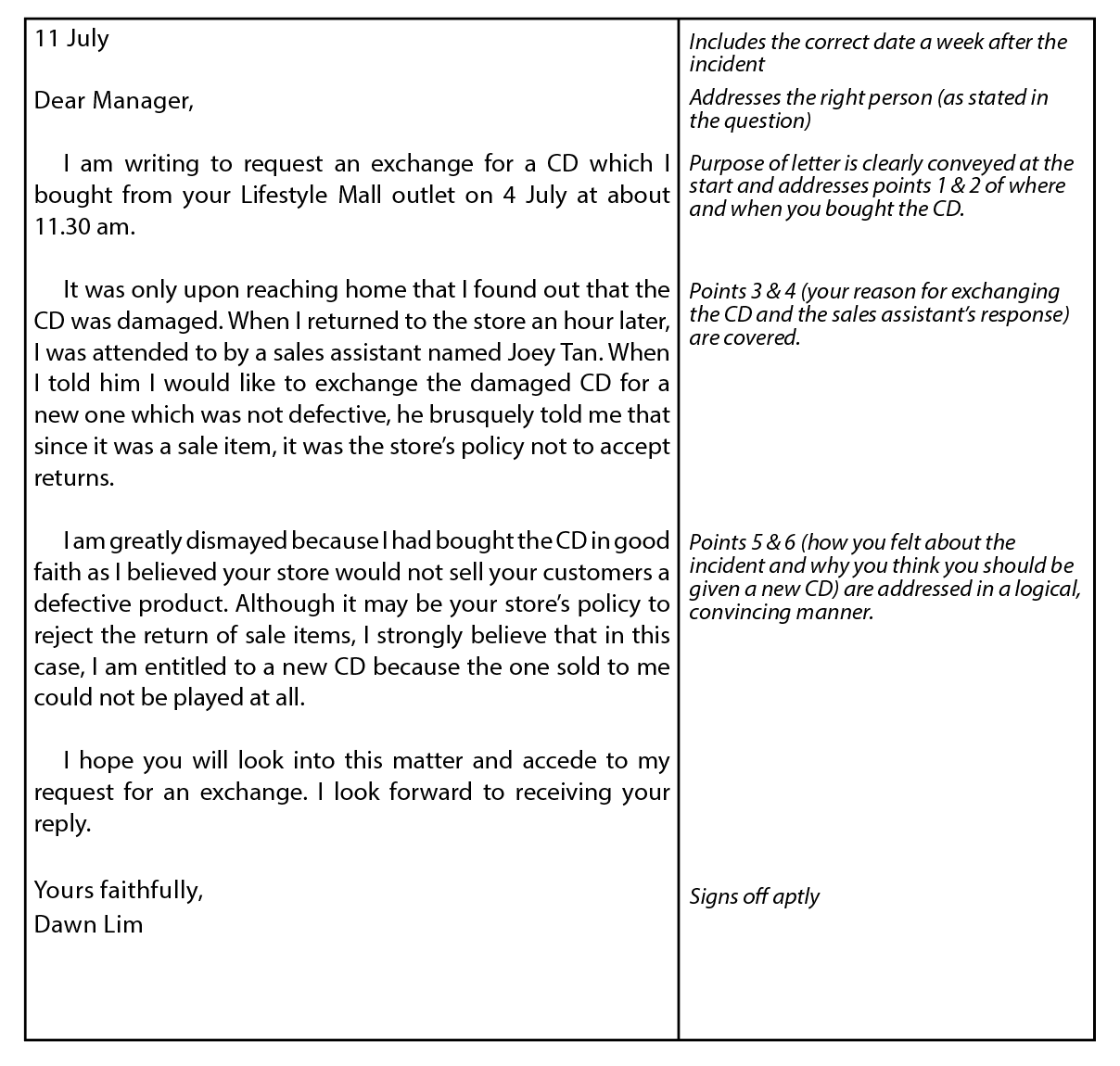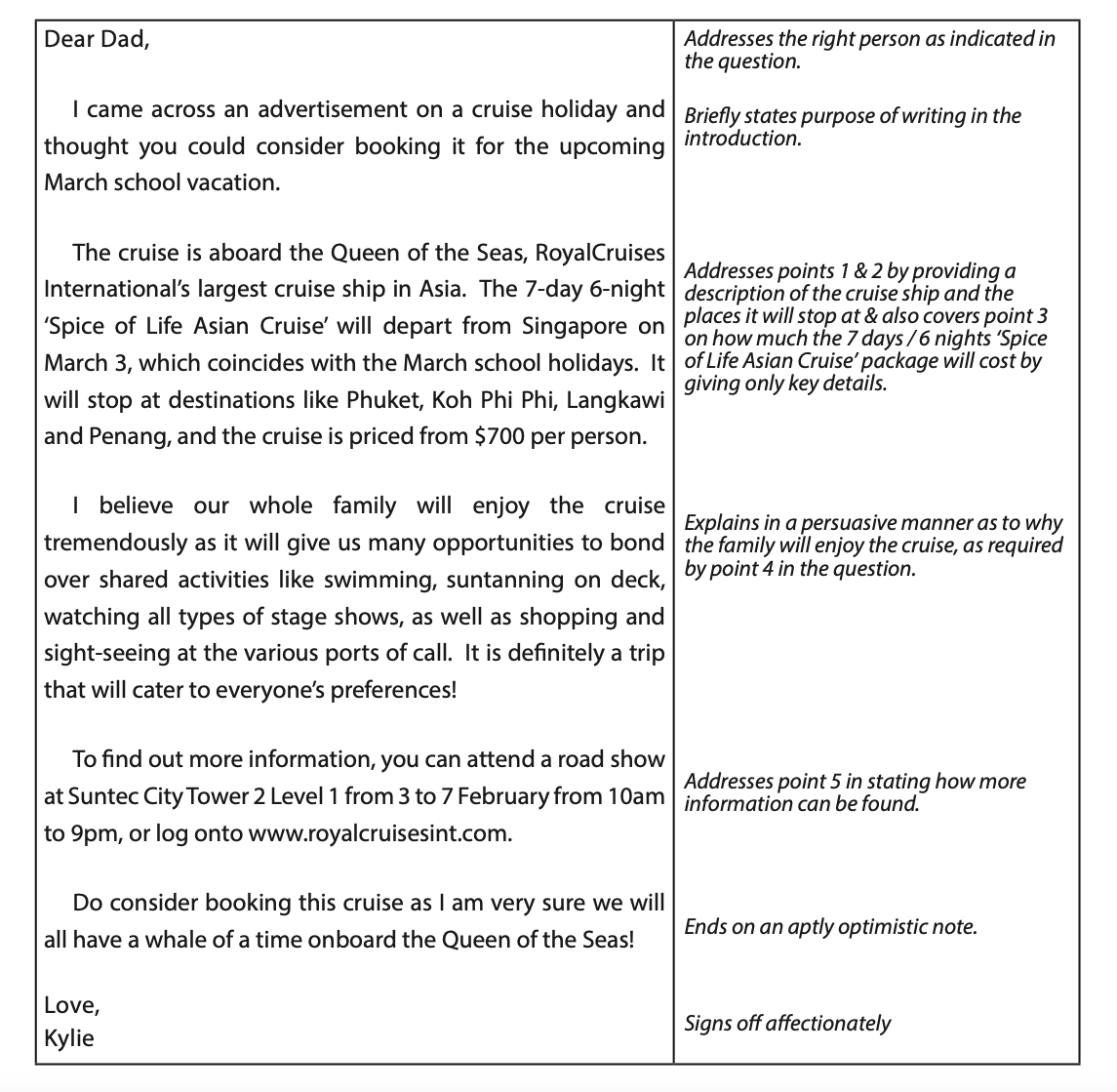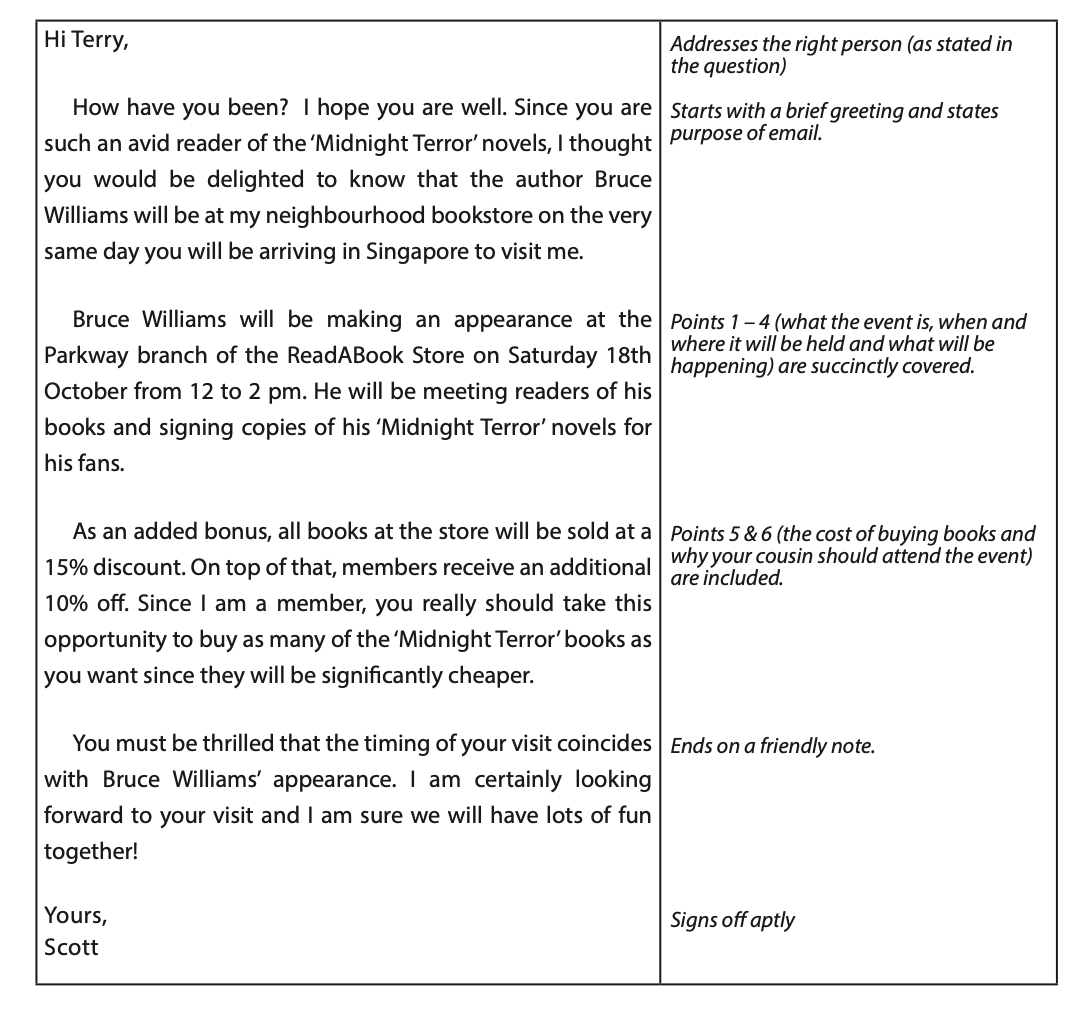
How to Score Full Marks for Situational Writing
Situational Writing is an important part of the Primary School Leaving Examination English Paper and other exams in primary and secondary school. Scoring full marks here isn’t just about knowing the Situational Writing format but also about mastering your language skills and addressing the task precisely. This guide will help you ace Situational Writing by covering formal and informal writing, giving situational writing examples, and sharing top tips.
Is It Possible to Score Full Marks for Situational Writing?
Absolutely! With the right strategy, you can score full marks in Situational Writing. The trick is understanding the marking criteria: 6 marks for content and 9 for language.
Content (6 Marks)
For full marks in content, you need task fulfilment. That means covering all the key information required by the task. Make sure you address every detail mentioned in the task box. Examiners look for specific content points, so missing any can cost you.
Language (9 Marks)
This part concerns grammar, spelling and punctuation, sentence structure, and maintaining a suitable tone. Show your strong command of English and make your ideas clear and concise.
Understanding Situational Writing Formats
Situational writing has two main types: formal and informal. Each has its own style and purpose.
Formal Writing
Formal writing is used in professional or official contexts. It requires a polite tone. Common forms include:
- Formal letter
- Formal email
- Report
Example of a Formal Letter

Informal Writing
Informal writing is used casually or personally, like writing to friends or family. It allows for a more relaxed, informal tone. Common forms include:
- Informal letter
- Informal email
Example of an Informal Letter

Tips for Scoring Full Marks
Here are some essential tips to help you score full marks in Situational Writing:
Understand the Task Carefully
Always read the task box and the provided visual stimulus thoroughly. Grasp what’s required and identify the task’s purpose, audience, and context. This understanding is crucial for a spot-on response.
Use the Correct Format
Stick to the Situational Writing format, whether it’s formal or informal. Ensure your sign-offs are appropriate, like “Best regards” for formal letters and “Your friend” for informal letters. Using the correct format shows you can distinguish between different writing contexts.
Cover All Key Information
Address all the content points provided in the task. Missing any key information can cost you marks. Include all necessary details without straying from the main points.
Maintain a Suitable Tone
Match your tone to the context. Use a polite tone for formal writing and a more relaxed informal tone for informal writing. Your writing’s tone significantly affects how your message is received.
Check for Grammatical Errors
Ensure your writing is free of grammatical, spelling, and punctuation errors. Good grammar is essential for scoring well in the language component. Proofread your work to catch any mistakes before submitting it.
Avoid Unnecessary Details
Stick to the points given in the task and avoid adding unnecessary details. This keeps your writing clear and relevant. Being concise is often more effective than elaborating unnecessarily.
Practise Regularly
Regular practice improves your writing and language skills. It also builds confidence in handling different Situational Writing tasks. The more you practise, the more familiar you become with various writing formats and styles.
How Much Time Should You Spend on Situational Writing?
Time management is crucial during an exam. For the PSLE English Paper, aim to spend about 15-20 minutes on the Situational Writing section. This includes planning, writing, and reviewing your work.
Planning: Spend the first few minutes understanding the task and planning your response. Identify the key information you need to include and outline your content points using bullet points. This helps you organise your thoughts and cover all the necessary details.
Writing: Allocate most of your time to writing. Follow the correct situational writing format and cover all necessary points. Keep a clear structure with an introduction, body, and conclusion. Use bullet points where appropriate to enhance clarity and organisation.
Reviewing: Reserve the last few minutes to review your work. Check for grammatical and spelling mistakes, and ensure you’ve addressed all the content points. Reviewing helps catch any mistakes you might have missed initially.
Examples of Formal and Informal Situational Writing
Informal Situational Writing Example

Common Mistakes to Avoid in Situational Writing
Ignoring the Task Instructions
One common mistake is not reading the task instructions carefully. Always make sure you understand what’s required before you begin writing.
Using the Wrong Tone
An inappropriate tone can seriously impact your marks. Always match the tone to the task — polite and formal for official contexts, relaxed and conversational for personal contexts.
Overcomplicating Sentences
Complex sentences can lead to grammatical errors. Simple, clear sentences that convey your message effectively are better. Avoid overly complex structures to maintain clarity.
Missing Key Information
Failing to include all the key information in the task can result in lost marks. Make sure you address every point mentioned in the task box.
Not Proofreading
Skipping the proofreading step can result in overlooking grammatical errors and spelling mistakes. Always review your work to catch any errors before submission.
The Role of Visual Stimulus in Situational Writing
Visual stimuli, like pictures or diagrams, are often provided to contextualise the Situational Writing task. These visuals can offer clues about the content points you need to address.
How to Use Visual Stimulus Effectively
Observe: Look at all the details in the visual stimulus. These details often contain crucial key information for your writing.
Link to the Task: Connect the visual stimulus and the task requirements. This helps ensure your response is relevant and complete.
Incorporate Details: Use the information from the visual stimulus to enhance your content. Mentioning specific details from the visual can make your writing more comprehensive.
Practising Situational Writing
Regular Practice
Regular practice is essential for mastering Situational Writing. Here are some strategies:
Reading: Regular reading helps improve your vocabulary and comprehension skills, crucial for continuous writing and situational writing tasks. Explore situational writing examples to familiarise yourself with different formats.
Variety of Tasks: Practise with various Situational Writing tasks, both formal and informal. This helps you become familiar with different formats and contexts.
Creative Writing: Engaging in creative writing exercises can boost your student’s critical thinking and ability to express ideas effectively. This enhances overall writing skills, making your situational writing more impactful.
Using Bullet Points: Incorporate bullet points to organise your ideas clearly and concisely. This helps in presenting all the information in a structured manner, making it easier for the reader to understand.
Timed Practice: Simulate exam conditions by timing yourself. This helps manage time effectively during the actual exam.
Review and Feedback: After writing, review your work and seek feedback. Identify areas for improvement and work on them.
Using Sample Papers
Practising with sample papers from past exams can be very beneficial. These papers provide a good sense of the tasks you might encounter and help hone your writing skills.
Preparing for the PSLE Situational Writing Section
Understanding the Marking Rubric
The marking rubric for PSLE Situational Writing outlines the scoring criteria. Familiarise yourself with this rubric to understand what examiners are looking for.
Key Areas of Focus
Task Fulfilment: Ensure you address all aspects of the task. This includes responding appropriately to the visual stimulus and covering all content points.
Language and Organisation: Pay attention to sentence structure, grammar, and the overall organisation of your writing. Well-organised writing with clear paragraphs scores higher.
Purpose, Audience, and Context: Always consider the purpose, audience, and context of your writing. This helps maintain the appropriate tone and content.
Time Management
Effective time management is crucial during the exam. Here’s a suggested approach:
Reading and Planning (5 minutes): Carefully read the task and visual stimulus. Plan your response, noting the key information you need to include.
Writing (10-12 minutes): Write your response, ensuring you follow the correct Situational Writing format.
Reviewing (3-5 minutes): Review your work for grammatical or spelling errors, and ensure you have addressed all the content points.
The Importance of Language Skills
Strong language skills are essential for excelling in Situational Writing. Here are some ways to improve your language:
Reading: Reading widely can help improve your vocabulary and understanding of different writing styles. Both fiction and non-fiction can be beneficial.
Writing Practice: Regular writing practice helps hone your language and writing skills. Try writing different situational writing tasks to get a feel for various formats.
Speaking Skills: Improving your speaking skills can also enhance your writing. Speaking clearly and confidently helps develop a good command of the language, which translates into better writing.
Addressing Common Challenges in Situational Writing
Understanding the Task: Sometimes, students struggle to understand the task. Always read the instructions carefully and identify the required key information.
Maintaining Clarity: Clarity is crucial in Situational Writing. Avoid overly complex sentences and jargon. Keep your writing simple and to the point.
Managing Exam Stress: Exam stress can impact performance. Practise relaxation techniques and stay calm during the exam. Being well-prepared can also help reduce anxiety.
Final Thoughts
Mastering formal Situational Writing is about understanding the format, sticking to the task, and having top-notch language skills. This part of the Primary School Leaving Examination (PSLE) tests the students’ ability to communicate clearly and effectively. Whether you’re writing a complaint letter about bad service, a formal email to the principal, or a report on the friendship run at school, you must ensure your body content is well-organised and easy to follow. Use good grammar, avoid short forms, and make sure your spelling is spot-on. Whether formal or informal, your letter should have a clear purpose and cover all requested information.
Don’t forget to sign off properly and check for grammatical errors. Following these tips and practising regularly will boost your chances of acing this part of the exam. Focus on clarity, relevance, and correctness, and you’ll do great!
For further details and up-to-date information, refer to the Singapore Examinations and Assessment Board (SEAB).
Youngsters can participate in our creative writing programs if they wish to succeed at writing compositions in English.
